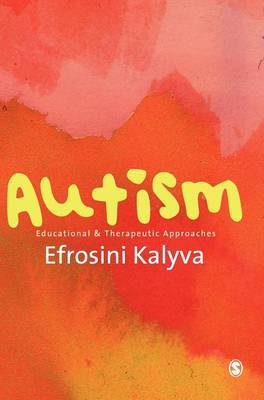
| Home page | Subscribe (print edition) | Selected articles | Our publications | Our mailing lists |
| PDF edition | Subscribe (PDF edition) | Back issue contents | Autism books | Contact us |
From Volume 5 Number 6 (Print and PDF editions)
Autism: Educational and Therapeutic Approaches, by Efrosini Kalyva. Published by Sage, UK, 2011. 185 pages
In this magnificent book, Efrosini Kalyva - one of the leading autism authorities in Greece - guides the reader, with impressive clarity, through the minefield of the many treatments, interventions and misconceptions about autism spectrum conditions.
Parents of autistic children can often feel so desperate to help their offspring that they will be led astray by charlatans peddling miracle cures. There is no cure for autism. As Kalyva puts it: “The therapies that promise a cure either lack scientific background or exaggerate some effectiveness they have in dealing with some characteristics of autism spectrum disorders ...”
The most dangerous of these methods, in my view, are the pseudo-scientific approaches which purport to be based on genuine research findings. I would single out the use of Lupron and chelation. Of course, there is anecdotal evidence to support the claims of effectiveness for these interventions, simply because parents are so keen to see an improvement in their child’s condition.
Perhaps the most telling example of this is the hormone secretin, which was touted as a miracle treatment in the form of an injection and then was shown, in several studies, to be no more effective than placebo. (Never understimate the remarkable strength of the placebo effect.)
On the other hand, Kalyva is rightly eager to emphasise that there are many promising programmes out there which have been assessed using scientifically acceptable research methods. But as she is careful to add, no single approach can successfully address all the characteristic behaviours of ASD “and it is therefore advisable to combine the most effective treatments and to adjust them to the needs of every individual with ASD in order to achieve the desired outcome.” Parents should, the author counsels, make themselves fully aware of the advantages and disadvantages of any intervention that they chose to adopt. She advocates healthy scepticism - in parents, educationalists, therapists and mental health professionals. I back this call wholeheartedly.
Kalyva then moves on to the specifics. First of all, she tackles the two major approaches to teaching autistic children - Lovaas or applied behavioural analysis (ABA) and TEACCH (Treatment and Education of Autistic and related Communication-handicapped Childeren). She does not mention the main reason why the late Ivar Lovaas’s methods came in for such vociferous criticism early on - namely, that he used electric cattle prods on the autistic children as an “aversive” (to punish inappropriate or undesirable behaviours). She does point out, though, that Lovaas would paint the children’s nails with a bitter nail polish to discourage them from biting them. Lovaas’s 1987 study claiming that nearly half of the children had “recovered” from autism has been attacked ever since its publication. Some of Lovaas’s own colleagues have told me that he could not possibly have had adequate tools at the time to measure the children’s progress - while other critics have pointed to sample bias and other methodological shortcomings. Yet it should be emphasised that Lovaas’s message - that autistic children could be educated - was at least a positive one when institutionalisation was still the norm.
Kalyva herself notes that “children who receive ABA face a basic difficulty in generalising their skills, abilities and knowledge.” In fairness, Kalyva also cites numerous studies which hove demonstrated that ABA can deal effectively with some of the symptoms of children with ASD - but only (and this is very significant), when used in combination with other effective approaches.
Let me declare an interest here: I like the philosophy behind TEACCH. This is not only because I knew and greatly respected its founder, Eric Schopler, and am a good friend of his successor as director of the North Carolina-based Division TEACCH, Gary Mesibov. It is also because I identify with TEACCH’s philosophy: to work closely with the parents (Schopler set up TEACCH in the 1970s, in large part, in order to counter what he rightly saw as Bruno Bettelheim’s extremely negative, parent-blaming “refrigerator mother” hypothesis) and also because there is no attempt to expunge the autism from the child, but rather to work with the autism, not against it. I also like TEACCH’s determination to adapt its programme to the latest research findings.
There are illuminating insights and stimulating opinions on virtually every page of Kalyva’s book. I found particularly interesting the findings of her own studies - for example, on the effectiveness of the Circle of Friends for promoting social interaction in nursery children with ASD. And I liked Kalyva’s judicious
inclusion of questions for further discussion at the end of each chapter.
Kalyva is correct to stress the visual strengths of many individuals with autism. Temple Grandin is, of course, well-known for “thinking in pictures” - see my in-depth interview with her elsewhere in this issue of Looking Up - and PECS (the Picture Exchange Communication System) has proven very useful for non-verbal autistic children. Indeed, PECS is the main communication system used by my own son, Johnny). At the same time, Kalyva importantly observes that, “since some children with ASD can identify written words more easily than spoken words, it is recommended to use visual symbols with an accompanying written word printed in small letters,.”
In their 1994 study, the inventors of PECS - Andy Bondy and Lori Frost - reported that 60 per cent of the children up to five years of age who used PECS for more than a year finally developed speech. More recently, however, Pat Howlin and colleagues conducted a randomised controlled trial of PECS, in 2007, which found no increases in ADOS-G ratings, frequency of speech or language test scores.
As Kalyva writes: “If you use PECS supportively, you can teach a child with ASD to develop certain communicative skills - mostly to fulfil his basic needs. You can teach him to ask for an object or to carry out an activity, but it is difficult to explain to him how he can share his ideas, feelings thought or experiences, Moreover, instilling the need for communication with the environment around him is even more difficult. This may be the reason that even those children with ASD who have learnt to use PECS effectively do not usually spontaneously initiate interaction with someone else, and they depend to a large extent on the prompt from someone else in their environment ...”
I have some very minor quibbles - which can easily be ironed out in the next edition of this magnificent volume. For example, Bernard Rimland died in 2006, which you would not guess from the text. But these are very trivial when set against the immense qualities of this invaluable book which is a joy to read from beginning to end.
Search for books by Efrosini Kalyva
Looking Up, 16-page English PDF Edition, Back Issues and Current Issue

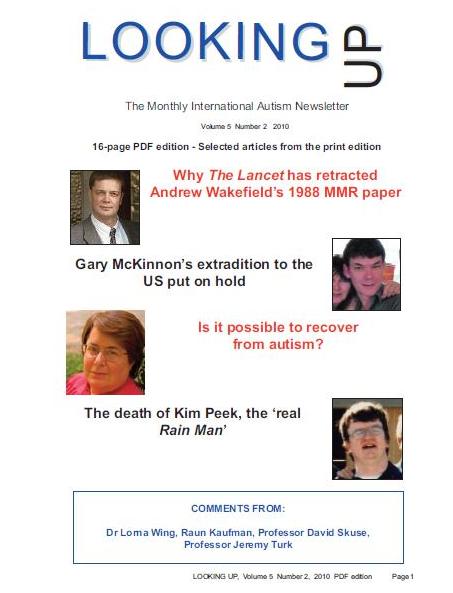
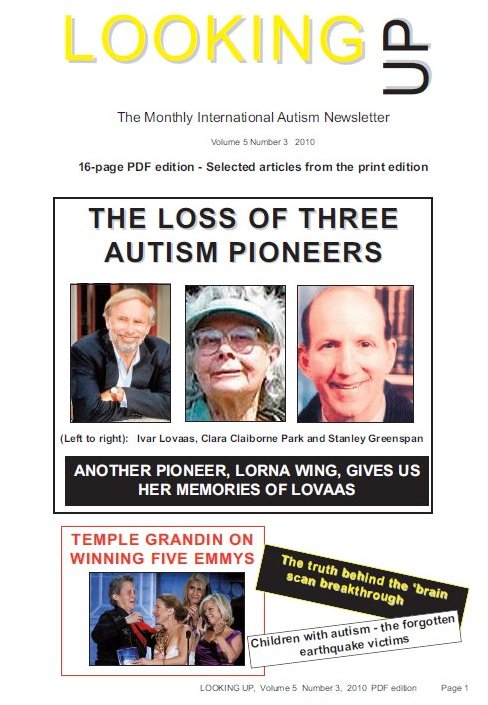
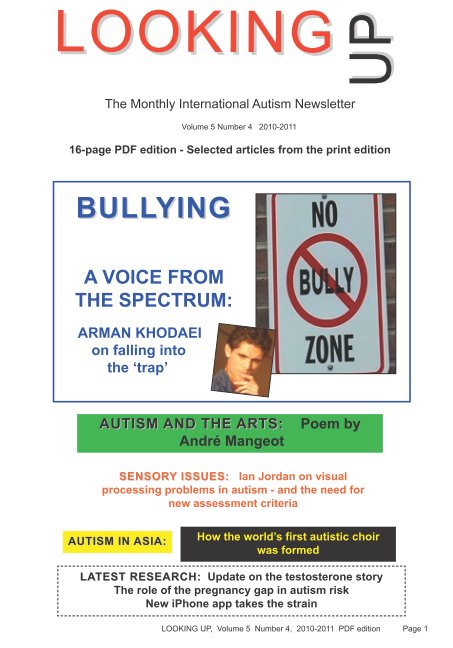
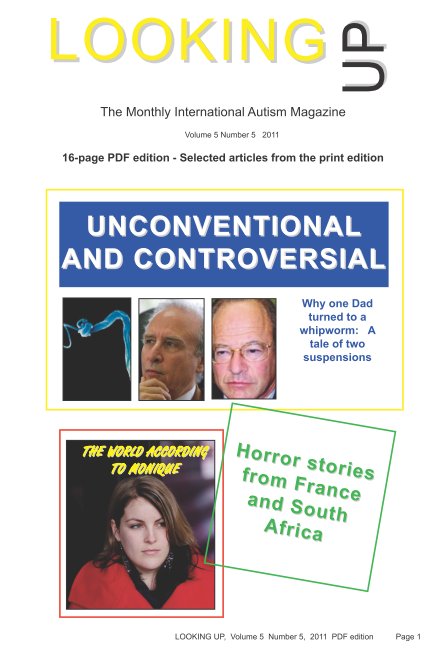
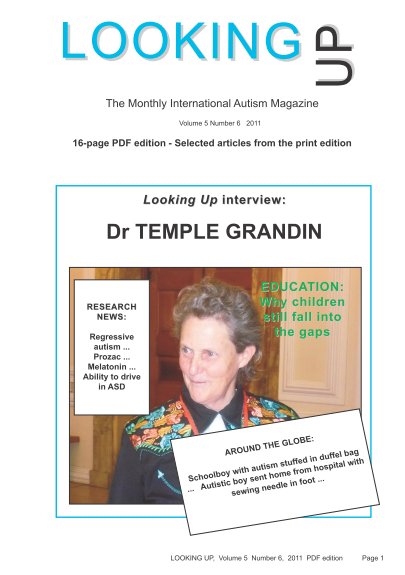
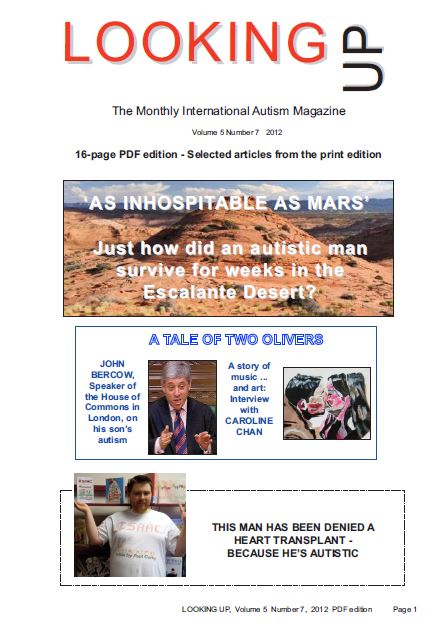
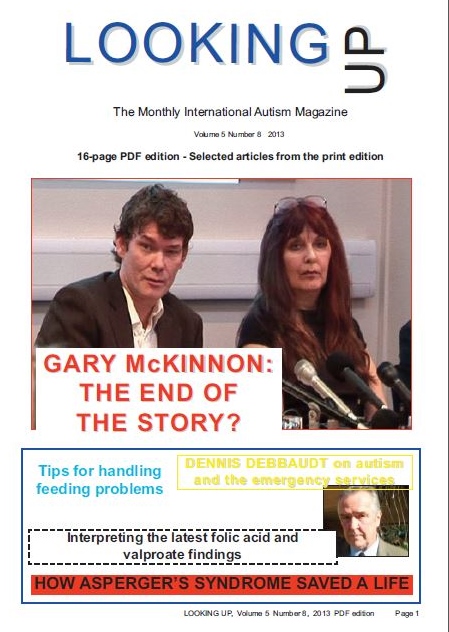
Current 40-page print edition issue
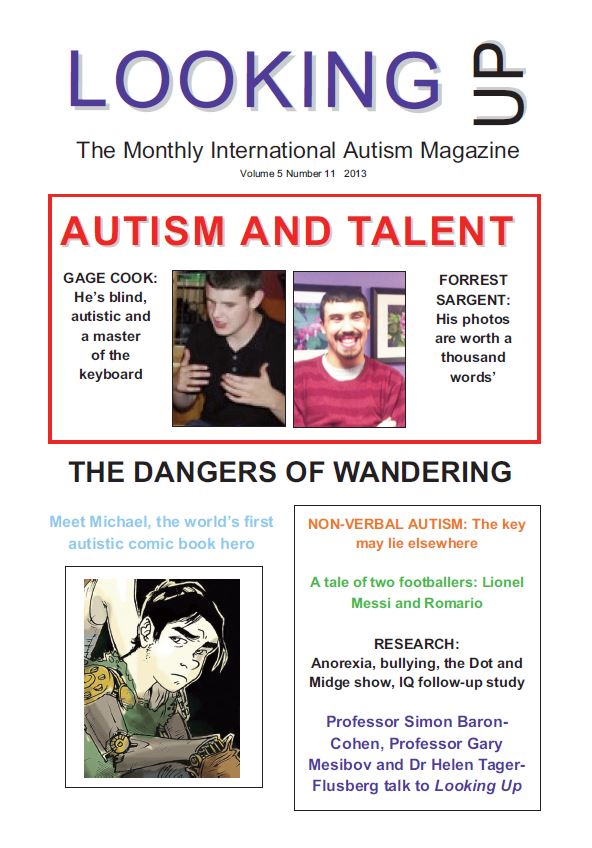
HOW TO CONTACT US
Email (general enquiries): Info@lookingupautism.org
Email (subscription/order enquiries): Subscriptions@lookingupautism.org
Postal address: Looking Up, PO Box 25727, London, SW19 1WF, UK
Telephone (London, UK): +44-208-5427702, or 0208-5427702 from the UK
FAX (UK): +44-871-3140327, or 0871-3140327 from the UK
Our Home Page: http://www.lookingupautism.org
Search our autism pages
PRINT EDITION BACK ISSUE CONTENTS AND FRONT COVERS
VOLUME 1, Number:
1
2
3
4
5
6
7
8
9
10
11
12
VOLUME 2, Number:
1
2
3
4
5
6
7
8
9
10
11
12
VOLUME 3, Number:
1
2
3
4
5
6
7
8
9
10
11
12
VOLUME 4, Number:
1
2
3
4
5
6
7
8
9
10
11
12
VOLUME 5, Number:
1
2
3
4
5
6
7
8
You can find our PDF EDITION CONTENTS AND COVERS on our PDF EDITION BACK ISSUES PAGE
Home page
Subscribe (print edition)
Selected articles
Our publications
Our mailing lists
PDF edition
Subscribe (PDF edition)
Back issue contents
Autism books
Contact us
Privacy
We use third-party advertising companies to serve ads when you visit
our website. These companies may use information (not including your
name, address, email address or telephone number) about your visits to
this and other websites in order to provide advertisements about goods
and services of interest to you. If you would like more information
about this practice and would like to know your options in relation
to·not having this information used by these companies, click here.